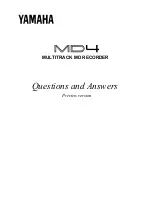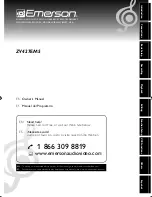
HA243821
Issue 5 Mar 98
Section 6
Page 6 - 3
MODEL 346 INSTALLATION AND OPERATION MANUAL
6.2 INSTRUMENT ALARMS
The recorder has self test software to monitor all critical operations. Entry into the instrument alarms is through
the last item in the main configuration menu and the last item in the operator menu.
If a flashing “I” appears, the following menu item should be accessed and the ENTER key operated to review
the item(s) which may be causing an instrument alarm.
Inst. Alarm ?
The Instrument Alarm menu items are as follows:
1. Battery low. The RAM battery is reported to have a voltage below 2.5 volts. At this point the battery should
be replaced to ensure retention of accumulated data and operation of the clock/calendar when the recorder
power is off. For recorders fitted with annotation pen trays, a ‘Battery low’ message is printed on the chart,
after each power-up.
Note...
A battery low message is normal when the recorder is turned on after an extended shut down period. There
is no battery problem if the alarm enunciator stops after a few minutes.
2. ROM bad. The basic software PROM is checked during initialisation which occurs when the recorder is
turned on or when abnormal operation is detected by self-test software. Any change sets the Instrument
Alarm. If ‘ROM Bad’ is reported, call the supplier for service assistance.
At recorder initialisation, the integrity of stored information and calibration data is checked, and returns a fail-
ure message, as detailed below, if any of the checks fails. Should the recorder determine that both the EEP-
ROM and RAM memories of an item have changed, the recorder loads default data from the system PROM
and sets the instrument alarm.
If any data has been lost, one or more of the following messages may be displayed by operating the page
scroll key.
1. Input prog X. Each measuring channel (X) is checked for lost input type, Hi/Lo limits, range Hi/Lo limits,
units and CJC type. See Section 4.8 for channel configuration information.
2. Input Cal. X. Each input channel (X) is checked for lost calibration data. See Section 6.3 for calibration
information.
3. Factory Cal. X. Each input channel (X) is checked for lost factory calibration data. If ‘Factory Cal.’ is re-
ported, the supplier should be contacted for service assistance.
4. CJC Cal. X. The input board is checked for cold junction compensation calibration data. See section 6.3
for CJC calibration information.
5. Chan. Prog. X. Each channel (X) is checked for lost chart Hi/Lo Limits, annotation choice, or interpolation
data. See Section 4.8 for channel configuration information.
6. Chart Prog. The calibration of the servo carriage is checked. See section 6.3 for carriage calibration infor-
mation.
















































